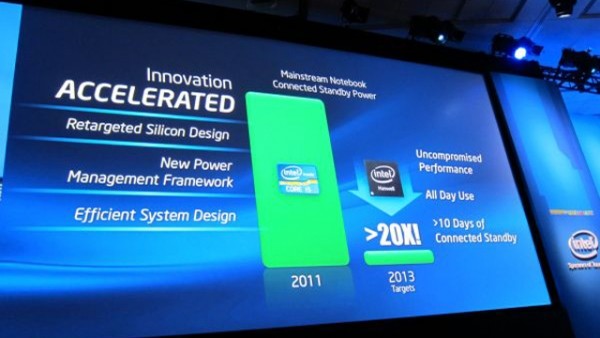One of the first topics discussed at the annual Intel Developer Forum today was Haswell, the codename for Intel's next-generation architecture that will replace the Sandy Bridge platform. Intel chief executive Paul Otellini spoke about Haswell, Ultrabooks and future experimental architectures at the event.
Haswell will be built on a 22nm process using 3D tri-gate transistors but it's the power consumption, or lack of, that's garnering the most media attention. We know that Haswell will follow the unreleased Ivy Bridge and is expected sometime in 2013.
Today we learned that the ultra-efficient chip will reduce platform power by a factor of 20 without compromising computing performance. This will result in what Intel describes as all-day usage and 10 days of network-connected standby battery life in Ultrabooks.

To drive home the fact that they are serious about power consumption, Intel demoed a system running a chip that was only being powered by a single UV light pointed at a solar cell the size of a postage stamp. Note that only the processor was powered by the solar cell; the rest of the system was powered using a traditional power supply.
The system was running Windows 7 and a small animated GIF of a cat wearing headphones. Intel referred to this architecture as "Near Threshold Voltage Core" and claims the chip pushes the limits of thermal transistor technology to tune power use to extremely low levels.
Haswell will eventually find its way into Ultrabooks but for the time being, Sandy Bridge CPUs are being deployed in first-generation models. Ivy Bridge will eventually replace these CPUs in 2012, possibly at CES. According to Anandtech, Ivy Bridge GPU performance is expected to be up to 60 percent faster than Sandy Bridge and feature 2x better QuickSync performance.